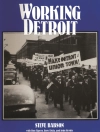A detailed history of the town of Lowestoft, its society, economy, and topography.
`A superbly researched study…. An excellent addition not only to the history of Suffolk but of early modern society and economy more generally.’ Professor RICHARD SMITH, University of Cambridge.
Lowestoft has grown from a small urban community to become Suffolk’s second largest town; and this book provides a vivid picture of the town and its inhabitants during the early modern period. Making full use of surviving documentation, in particular the parish registers, it begins with an overview of Lowestoft’s medieval history, then proceeds to investigate topographical development, demographic features, occupational structure, social geography, house-building and interior décor, wealth and inheritance, maritime pursuits, agriculture, local government, education and literacy, religious affiliation, and urban identity. Wherever possible, the town is set into a national and European context, and its maritime nature fully brought out.
DAVID BUTCHER is a retired Lowestoft schoolteacher and lecturer in Local History topics for the Continuing Studies Dept. at the University of East Anglia.
Jadual kandungan
Origins and Influences
Topographical Features of the Town
Historical Demography
Occupation and the Local Economy
Housing, Population and Social Geography
House Design and Interior Arrangements
Wealth, Credit and Inheritance
Fishing and Maritime Trade
Agriculture and Allied Industries
Parochial and Manorial Administration
Literacy, Education and Religious Belief
Urban Status and Identity
Mengenai Pengarang
DAVID BUTCHER is a retired Lowestoft schoolteacher and former lecturer in Local History topics for the University of East Anglia












